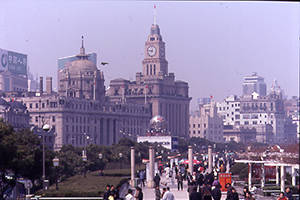 Shanghai may have impressed early writers, but there is little affection or warmth for the city in their observations. Charles Halcombe, a gifted journalist who worked for the North China Daily News in the late 1880s, wrote of “ノnot wishing to enter the gloomy precincts of the French Concession, with its unpretentious buildings of miscellaneous architecture and uncertain date, which look cheerlessly out upon a dismal avenue of scraggy trees. Was it really that dreadful? What remains in the French quarter from that time, including the bungalows and town houses, now seem incomparably valuable, reeking with charm.
Shanghai may have impressed early writers, but there is little affection or warmth for the city in their observations. Charles Halcombe, a gifted journalist who worked for the North China Daily News in the late 1880s, wrote of “ノnot wishing to enter the gloomy precincts of the French Concession, with its unpretentious buildings of miscellaneous architecture and uncertain date, which look cheerlessly out upon a dismal avenue of scraggy trees. Was it really that dreadful? What remains in the French quarter from that time, including the bungalows and town houses, now seem incomparably valuable, reeking with charm.
There were, admittedly, dangers in living in a city that had an abnormal number of opium addicts, prostitutes, spies, subversives, grifters and carpetbaggers. Theft, assassination and kidnapping were commonplace, explaining, perhaps, why so many crime and mystery novels continue to be set in pre-war Shanghai.
Halcombe himself, in a section of his memoirs, describes an outrageous attempt to rescue a young Chinese women he was smitten with from a house of ill repute along Rue Zhu Baosan, an area better known as Blood Alley.
Nominally run by the consulates that represented the foreign settlements in Shanghai, the real authorities were the underworld syndicates who, besides their control of labor groups like rickshaw pullers and factory workers, engaged in drug-peddling, gambling and protection rackets. They also appear to have had a social role, stepping in to settle neighborhood disputes, a role traditionally reserved for clan elders and secret societies.
The most notorious of these Shanghai bosses was Du Yuesheng, head of the much-feared Green Gang. An immensely influential Shanghai figure, his three-story house, bristling with armed guards, is said to have had a wife on each of its floors. Poet W.H. Auden met Du in 1937, describing him in his book Journey to War as “tall and thin, with a face that seemed hewn out of stone, a Chinese version of the Sphinx. Peculiarly and inexplicably terrifying were his feet, in their silk socks and smart, pointed European boots, emerging from beneath the long silken gown.
Shanghai is defined in memory, not so much by its ordinary, hard working Chinese inhabitants, as by its smorgasbord of colorful Western figures: film director Josef von Sternberg, wealthy Jewish bankers, famous White Russian emigres, writers, actors and super-affluent tourists who included the city on their “grand tour of the Far East. Only when a Chinese person achieved a certain degree of infamy, such as the pock-marked gangster Huang, did they qualify for a place in the collective memory of the city.
Shanghai,s heady mix of opium dens, brothels, tea dances, European orchestras, Filipino jazz units and tango bands offered the thrill of somewhere illicit and faintly immoral, where a foreign visitor, simply by following the city,s social customs, might feel absolved from guilt.
By following the architectural styles of the European residences, public buildings, Victorian facades and Art Deco hotels that remain today along the Bund, in the old Chinese Quarter and in the shili yangchang, (formerly known as the Foreign Concessions), it is much easier to plot the history of the physical city than the social one. Some residences in the former French Concession district remain virtually unchanged from their original Mediterranean and Belgium prototypes. There are also odd touches of Tudor brick and exposed beam, the styles of old London and Brittany. Many of these houses became multi-family dwellings back in the 1950s and 60s.
More recently, dwellings in these areas have been rented out to foreigners at extortionate prices by property owners seeking to make a quick buck or two. Other residences house the families of high-ranking Communist Party officials, who favor these charming areas in much the same way as the European taipans once did. Zhou Enlai,s old house, a good solid bourgeois residence, now boasts a bronze plaque declaring, without a trace of irony, that the Patriotic Promotion Site can be found here along a nice tree-lined avenue.
The Art Deco style spread from Paris to Havana to Shanghai, but the materials, climate and manner of construction differed at each location. Here the cheerful white stone buildings contrast with the glummer industrial browns of locally baked brick. There is a lot of brick and soot in Shanghai. Enough, in fact, for one early Chinese igr to Britain to remark that, “Shanghai looks so much like London.
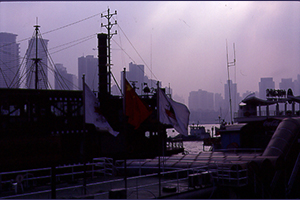 The heady, slightly ersatz eclecticism that has always been a part of Shanghai,s ability to absorb all manner of influences can be seen in its religious architecture. Here we have the 1934 Moore Memorial Methodist Church, a neo-Gothic structure, the High Gothic, red brick Xu Jia Hui Cathedral, the 1853 Dong Jia Du Cathedral built by Spanish Jesuits, the Greco-Roman looking Ohel Rachel Synagogue, and the Xiao Tao Yuan Mosque, an arresting blend of Islamic, Chinese and Art Deco components. You may also stumble upon Russian Orthodox and Protestant churches, even the odd Shinto shrine in the older parts of the city.
The heady, slightly ersatz eclecticism that has always been a part of Shanghai,s ability to absorb all manner of influences can be seen in its religious architecture. Here we have the 1934 Moore Memorial Methodist Church, a neo-Gothic structure, the High Gothic, red brick Xu Jia Hui Cathedral, the 1853 Dong Jia Du Cathedral built by Spanish Jesuits, the Greco-Roman looking Ohel Rachel Synagogue, and the Xiao Tao Yuan Mosque, an arresting blend of Islamic, Chinese and Art Deco components. You may also stumble upon Russian Orthodox and Protestant churches, even the odd Shinto shrine in the older parts of the city.
A number of buildings in the Ming Dynasty Yangtze delta style of architecture can still be viewed in the old Chinese part of the city, just south of the Yu Yuan Bazaar. Instantly recognizable from their tiled roofs, rippling, white washed “dragon walls, keyhole windows and latticework, the buildings are the type of imperiled Shanghai residences that seem to have “Condemned! written all over them.
Other historical styles can be seen in the Chinese-style wood-frame constructions of the late 19th century, the Jiang Nan-style buildings inside Yu Yuan Garden and the much rebuilt Longhua Pagoda, used as an anti-aircraft emplacement by the Japanese in the war, in much the same way the Khmer Rouge in Cambodia requisitioned galleries at Angkor Wat for their own gunnery.
Gentrification may, reluctantly, be the preservationists, best option for Shanghai,s older edifices. There are already boutiques and Starbucks wedged between older brick and stone edifices. Museums, art galleries and theaters, relics of a storied architectural past, are being restored to their former opulence and attracting the crowds they deserve.
Some of the most commercially successful renovations have been the Majestic and Lyceum theaters, art house gems that once staged plays in French, Yiddish, English and Russian. Add to that the carefully refurbished Shanghai Concert Hall, Dramatic Arts Center and Shanghai Art Museum, housing one of China,s best collections of art.
Europeans put their imprimatur on the city by changing its street names, something the Communists would do when their turn came. Driving through the French Concession, you would pass along Avenue Foch or Avenue Joffre, before turning into the International Settlement and Avenue Edward VII. The Communists leached out such individuality of place, even in its local forms. Such fragrant, suggestive streets names such as Pickled Melon Street, Jiang Family Medicine Lane and Jade Alley were replaced with the blandness of thoroughfares named after nationalist heroes or Communist work details.
Shanghai,s rebirth as the most sophisticated and cosmopolitan of China,s major cities dates the early 90s. Visiting the city in 1981 in the company of celebrated painter David Hockney, poet Stephen Spender was still able to recall in his diary, “We walked into the streets from our hotel this morning and saw dozens of people looking eagerly at a display of ballpoint pens in a shop window. The day of the modest novelty has most definitely passed.
The avant-garde skyline of the new Shanghai slices above the rooftops of the old. Depending on your view, the tension between the historic structures and the new is either arresting or alarming.
This kind of blending though, has long been typical of a uniquely Shanghainese style known as hai pai. Apartment buildings, for example, although they may have been built over the rubble of the original, are often constructed with design references to the lane residences of an older Shanghai.It,s become a convention for journalists to wax lyrical about Pudong,s architectural behemoths, symbols of the New China. Pudong,s self-important buildings failed to impress me. Even the iconic Oriental Pearl Tower, symbol of the new Shanghai, bears a remarkable resemblance to an old television valve or studio appurtenance from a 1950s, sci-fi film. Inhabiting the age of bug-eyed monsters, the bubbling test tubes of a mad scientist, the tower looks old before its time.
One of the unstated purposes of the Oriental Pearl Tower, apparently, was to divert attention away from the Bund on the opposite side of the river, its powerful European architectural stamp. An indisputable symbol of the city, the Bund was also a reminder of its colonial past and a grim reminder of the fact that it was Europeans who first put Shanghai on the world map. In a gesture that seems a tad childish, the roof of each building along the Bund has a fluttering Chinese flagpole at its highest point.
One Pudong structure, though, does stand tall in every respect, and that,s the Jin Mao Tower, a truly majestic building. Inspired by the tradition of Chinese pagodas and Chinese numerology, the tower has 88 stories. The lowest segment comprises 16 floors and each succeeding section is one-eighth smaller. Local authorities appear to be more comfortable with traditional motifs these days, a view corroborated by the lotus-topped tower of the 2002 Bund Center.
Pudong remains an exercise in that distinctive form of Shanghai ambition a thirst to be at the forefront of change. It was the first Chinese city to have gaslights, electricity, streetcars, running water and telephones. The country,s first automobiles graced its first paved roads. More recent firsts have included the world,s only commercially operative magnetic-levitated railway and the world,s highest hotel, Pudong,s Grand Hyatt, where your dirty underwear will drop 88 floors down the world,s longest laundry chute.
At night Shanghai turns into Crystal City, it,s skyline organic, shivering with neon pixels. One building, covered in fine electronic circuitry, ripples with sheets of changing color like the shell of a phosphorescent insect.
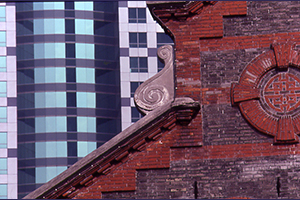 At a certain level, Shanghai is making a return to the decadences and excesses of a former era. The spoilt children of the nouveau rich, brand name addicts, cross-dressers and demimondaines that roam the city streets are awfully similar to their 1920s and 30s counterparts. For many, Shanghai,s blend of Oriental and Occidental, its bourgeois pleasures, capitalist ambitions, its communities of intellectuals, writers and artists are all things to celebrate, to be cultivated as the adjuncts of an important cosmopolitan city.
At a certain level, Shanghai is making a return to the decadences and excesses of a former era. The spoilt children of the nouveau rich, brand name addicts, cross-dressers and demimondaines that roam the city streets are awfully similar to their 1920s and 30s counterparts. For many, Shanghai,s blend of Oriental and Occidental, its bourgeois pleasures, capitalist ambitions, its communities of intellectuals, writers and artists are all things to celebrate, to be cultivated as the adjuncts of an important cosmopolitan city.
Shanghai writer Wei Hui,s earlier, safer books were lionized by the official state media. Her short reign as darling of the Chinese literary scene, however, ended with the publication of Shanghai Baby, a semi-autobiographical novel of sexual awakening.
Forty thousand copies were burnt in public, an act that unintentionally turned the title into a cult icon. “Decadent, debauched and a slave of foreign culture, was just one of the phrases used by local officials to denounce the young writer, a description that could well apply to Shanghai itself in its pre-war years.
Another Shanghai novelist who has to watch her step with the authorities is Mian Mian, a former drug addict. The titles of her books alone Candy, La La La and We Are Panic have been enough to turn the faces of China,s official censors an apoplectic blue.
Although none of these writers have been clapped in irons for their work, there are clear limits to Shanghai,s new freedoms. China is still run by a Communist government whose prudery is notorious. Bookstores sell only officially approved literature and newspapers, crackdowns on behavior are not uncommon, including raids on internet cafes in an attempt to flush out not just perverts, but subverts. Nightclubs that attract prostitution and drugs common items in today,s Shanghai risk being shut down. Decadence remains a strictly illegal commodity, albeit one that is almost impossible to control.
Besides an appreciation of the real estate value in owning a period villa in the former French Concession (Wei Hui purportedly lives in one herself), the Chinese population in general have little nostalgia for the decadent times of pre-1949 Shanghai. And why should they? Here was a city where bodies of the poor were placed in coffins and floated down the Huangpu River and out to sea after being picked up every morning on the streets, where the rich placed sable coats over their car engines to keep them warm while people froze to death on the streets. Taking it to another extreme, the Shanghai Hotel back then operated two independent elevators: one for whites, and one for Chinese, Koreans and Japanese.
Today,s city is cleaner and more orderly than ever. The streets are safe at night. But the inequalities that characterized the old Europeanized Shanghai are returning with a vengeance. The city is teeming with displaced workers from China,s southern provinces. The obscenely rich Chinese this time round do not rub shoulders with the poor, preferring to hunker down in residential quarters that bear an awfully close resemblance to the old foreign settlements. And the British alder woman who recently declared that she didn,t see a single beggar during an official trip there recently must have taken a very different route through the city to the one I followed.
Travel Information
There are several daily ANA, JAL and Air China flights from Narita, but Shanghai is also well served by other large Japanese airports.
The best way of getting into the center of the city from the airport is by taxi or via the mag-lev. I took a local bus in on a cold, rainy night and was dropped off at a bus stop under a web of overpasses. Very disorientating. The city has a highly efficient subway system. Taxis are cheap and reliable.
That Art Deco matron, the Peace Hotel (tel: 00-886-21-6321-1244) is full of atmosphere. River view rooms from エ13,000. Another splendid 1930s-style place, with bags of space and elegance, is The Metropole Hotel (tel: 00-86-21-66321-3030), where double rooms go for less than エ5,000. Off-season you can often bargain down the price.
Christopher Newユs epic novel Shanghai is a must. One of the best books on the city is Shanghai: The Rise and Fall of a Decadent City, by Stella Dong. Tintin fans will love The Blue Lotus, which is set in 1931 Shanghai. The background to the story, of opium dens and Japanese spies, is based on actual events.
Story & photos by Stephen Mansfield
From J SELECT Magazine, March 2007



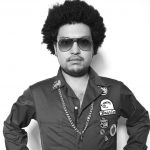

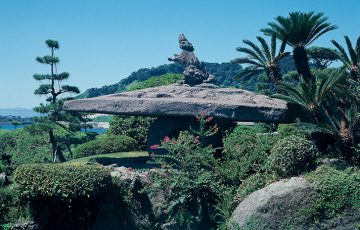
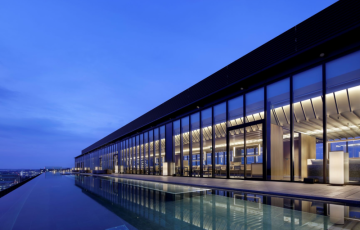

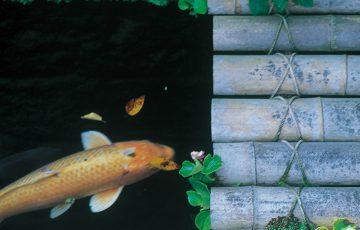
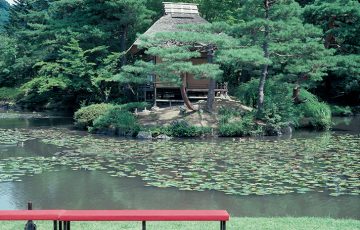
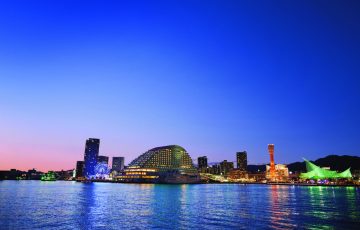
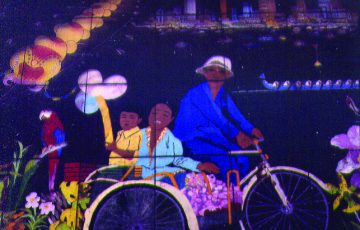
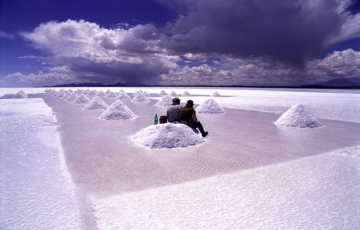


Recent Comments